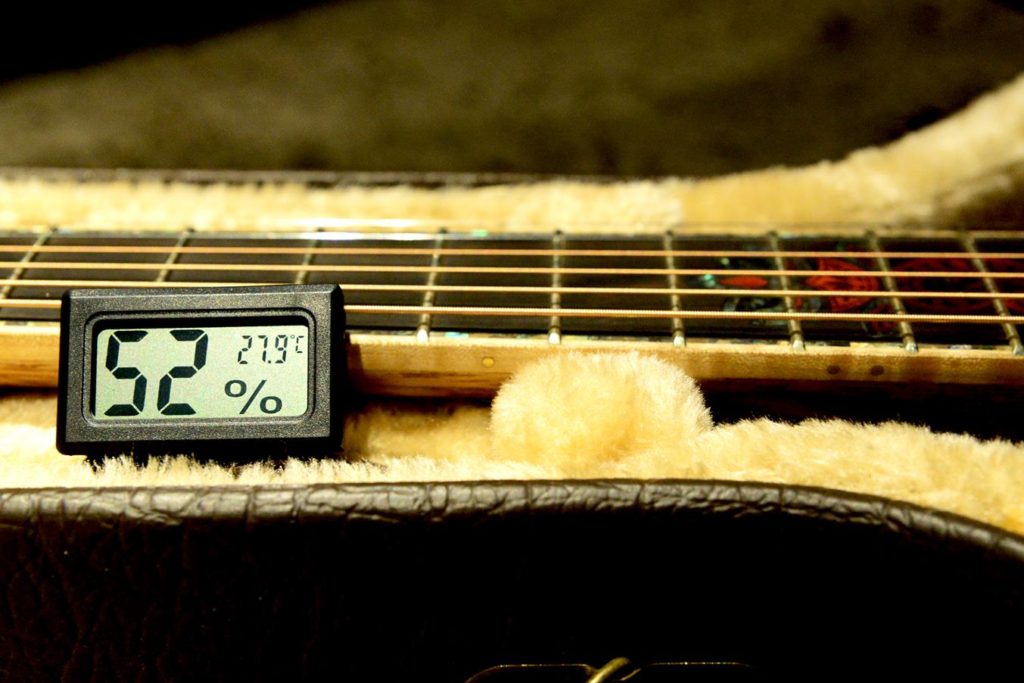No products in the cart.
Blog
Winterizing your Wooden String Instruments
Winterizing your Wooden String Instruments, is usually not a high priority here in the southeast, but with temperatures regularly dropping down into the low twenties in the past couple of weeks here in Southeast Georgia, we may have to pay some extra attention to keeping our string instruments humidified more than during ‘normal’ winters.
Okay, so the weatherman fooled us last fall, when the winter predictions were colder than normal for the northern US and warmer than normal down here in the south.
The winter can be tough on wooden instruments. Dry air can suck the humidity out of your instrument, making it more difficult to play and in more extreme circumstances, maybe even causing cracks or other damage. Rule of thumb for me is, if I wake up at night with a dry mouth, my guitar is suffering too. Home heating dries out the air inside your house. Furthermore, ambient air movement circulates the warm air around your instrument, drying it further.
Stringed wooden instruments are happiest given a constant temperature between 60 to 70 degrees and a relative humidity of 35 to 50 percent, pretty much the same as most human beings, which is why our thermostat is usually set in that comfort zone. Unfortunately, such ideal conditions are virtually impossible to maintain as fall turns to winter, the heat comes on indoors, and your instrument travels from home to rehearsal, school, or concert hall through all kinds of weather.
Wood is hygroscopic, meaning that it attracts and absorbs moisture from the atmosphere. As it takes on moisture, wood swells. As it dries, it shrinks and to compound the problem, different tone woods such as spruce and maple swell and shrink at different rates, putting stress on the instrument. Now the glue used to put quality instruments together will break before the wood breaks, and most instruments survive the changing seasons from dryness to humidity fine, as long as you keep an eye on air stability.
A guitar will show signs of dryness in a few different ways. The action will get higher as the neck is less able to resist the tension of the strings. As the top dries, the bridge will lift up and be pulled forward, also causing higher action. The fretboard will start to shrink, causing the fret edges to become exposed and feel sharp. Cracks will start to appear, small at first, often around seams or where the top has been book-matched. In extreme cases, the bridge may crack or become unglued from the top. Sounds like a horror story even though many of these things can be repaired, but prevention is the best medicine.
In the summer we usually have too much humidity, which also can be a bad thing for your wooden instruments. Excessive humidity can warp your instrument’s top, raising the action and possibly causing neck damage.
So what we’re looking for is ways to ward off potential trouble by avoiding temperature extremes, humidity, and abrupt transitions as much as possible. Of course, perfect stability is not realistic, but here are a few suggestions that can help your instrument through the rigors of winter:
First there is the Hygrometer, that monitors correct humidity. $15 – $20 buys you a dependable quality hygrometer at Best Buy or Radio Shack. If the humidity drops below 20%, it’s time to invest in a humidifier (also for your own health).
Second suggestion is to keep your instrument in its case, the first line of defense against extreme conditions. A padded case is even better.
Thirdly give your instrument a bit more time to adjust if you take it out in extreme conditions. Let it sit in its case a bit longer then normal after any transport.
With a little attention to detail your instruments are fine during normal winters, but when you find yourself lighting the fireplace almost every day, it’s time to put instrument protection into the mixture.
Oh and I once learned from on old instrument maker, who lives up in the mountains in central Italy, that he uses silk wraps for his prized possessions. No scientific evidence, but according to him it has been done for centuries, with apparently satisfying results.
Winterizing your wooden string instruments: Something to consider if this winter weather here in the southeast continues the need for heating our homes.

